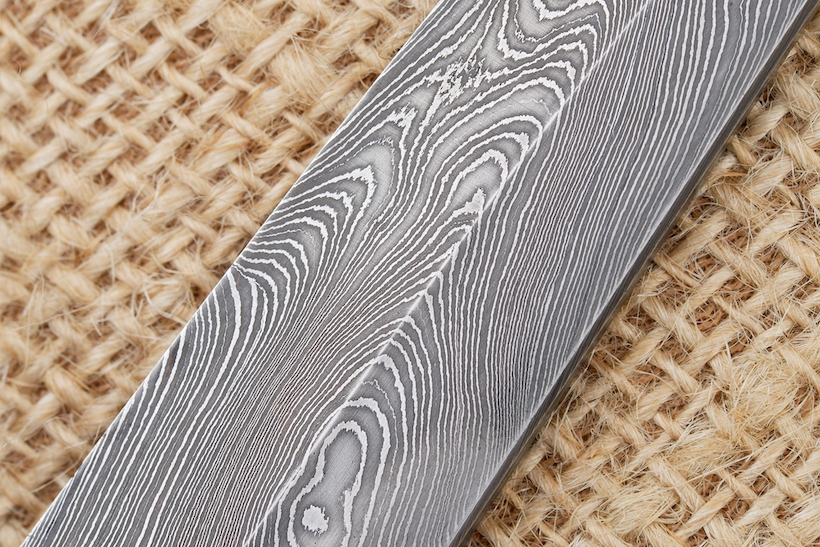
What is Damascus Steel. But in the early 1900s production stopped when the Belgium city of Liege which had produced 850 tons 771 metric tons of Damascus barrels fell to the invading German army in World War I in 1914.

According to the World Steel Association 18699 million tons of steel were produced in 2019This represents a 34 increase in output from 2018 and is more than double the output in 1999.
How is damascus steel produced and manufactured. Modern Version of Damascus Steels Produced by Additive Manufacturing. Optical micrograph showing a layered Damascus-like structure consisting of a sequence of soft and hard bands. The hard bands appear dark in the optical micrograph because the Ti-rich precipitates in these layers lead to a rough surface during etching.
Today there are some manufacturers who claim to forge and sell items made of Damascus steel but real Damascus steel is no longer being produced today. In India and other sources of these Wootz steel ingots their production was variable meaning that the natural contaminants of the metal would differ. Damascus imported Wootz steel from Persia and Sri Lanka for the production and utility of hybrid steel blades known for their toughness.
Apparently the minds behind this technological development understood how combining various metals would create weapons of increased strength over those made of pure steel. Damascus steel chef knife and sword techniques were introduced by importing Wootz steel ingots from South India through Arab merchants and were soon appropriated and produced to scale in Damascus. The most striking feature of Damascus Steel is certainly the series of layers that are formed in the brazing processes the steel is cut and brazed.
An introduction to the production and properties of steel alloys A steelworker in a steel mill. According to the World Steel Association 18699 million tons of steel were produced in 2019This represents a 34 increase in output from 2018 and is more than double the output in 1999. How Steel Is Made.
Steel is primarily produced using one of two methods. Blast Furnace or Electric Arc Furnace. The blast furnace is the first step in producing steel from iron oxides.
The first blast furnaces appeared in the 14th century and produced one ton per day. Even though equipment is improved and higher production rates can be achieved. But in the early 1900s production stopped when the Belgium city of Liege which had produced 850 tons 771 metric tons of Damascus barrels fell to the invading German army in World War I in 1914.
Damascus steel is known for its beauty including various patterns. This is going to be a rather long and in depth video on hypereutectoid crucible steel a historical steel known by many names from Pulad Persian Wootz. They are produced in any extremely high temperature environment where iron or nickel is present along with much higher concentrations of carbon and thus should be present in all steel at some concentration but the concentration of carbon nanotubes could have been increased by superheating charcoal with just a trace of iron dust prior to mixing it with iron in a crucible.
Knife Steel Nerds coffee mugs have been shipped to all current Ultimate Steel Nerd Patreon supporters. What is Damascus Steel. There are two major steel types that are called Damascus.
Crucible or Wootz steel was first produced in India and Central Asia and produced into swords anciently from at least the 3rd century AD Continue reading Five Myths About Damascus Steel. Hypereutectoid steels is increased by V and Si 49. Verhoeven 5 presumed that the lack of a certain level of impurities in the Indian wootz manufactured since the beginning of the 19th century might have been the reason for the decline of Damascus blade production at this time.
The original Damascus steel or wootz was imported from India to Damascus where bladesmiths learned how to forge them into swords. Due to the distance of trade for this steel a sufficiently lengthy disruption of the trade routes could have ended the production of Damascus steel and eventually led to the loss of the technique in India.